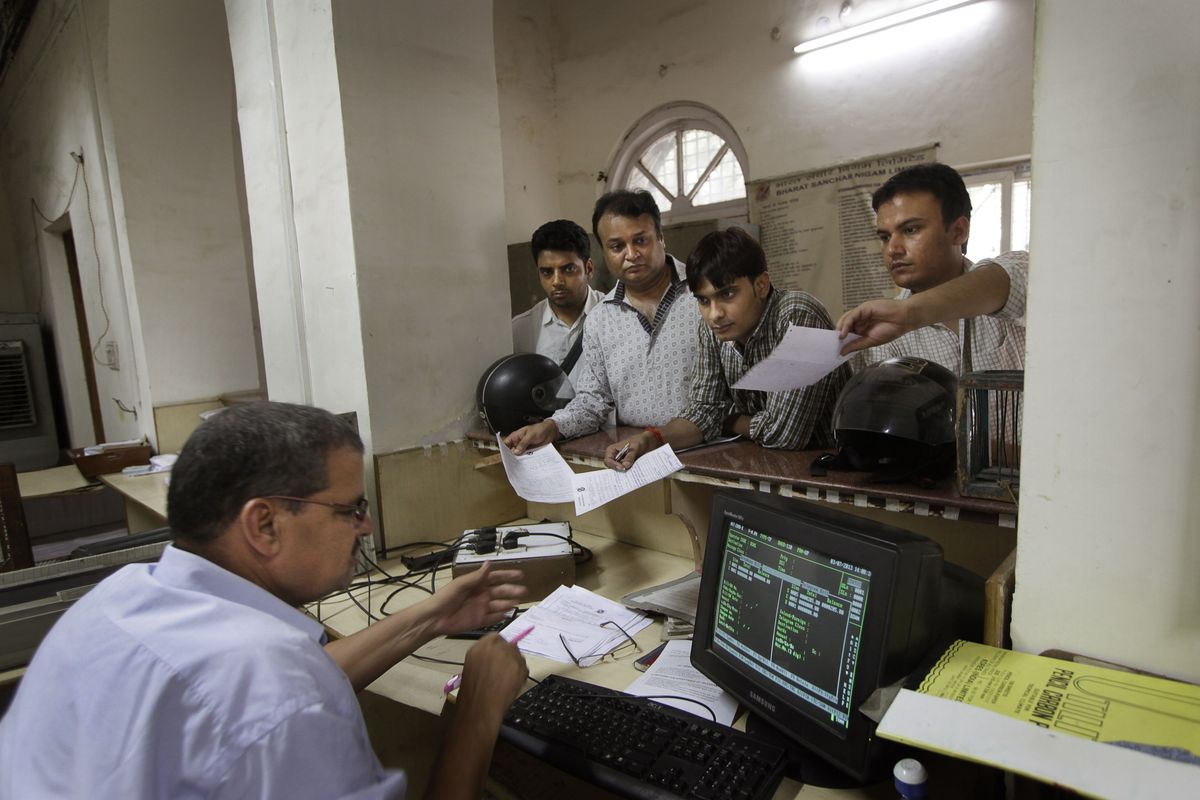In India, last telegrams sent
Once king of communications, service overrun by technology

NEW DELHI – For 163 years, lives across the vast Indian nation have been upended by the knock of the khaki-clad postal worker armed with a telegram.
Families used them to announce births and deaths, the government used them to post job openings, young lovers sent them to tell their folks that they had eloped.
No longer.
On Monday, the state-run telecommunications company will send its final telegram, closing down a service that fast became a relic in an age of email, reliable landlines and ubiquitous cellphones.
The fact that the telegram survived this long is a testament to how deeply woven it is into the fabric of Indian society. In much of the rest of the world, telegrams long ago were relegated to novelty services used by people who wanted to indulge in a bit of nostalgia.
Just 30 years ago the telegram was king in India. But the service has lost $250 million in just the last seven years as national cellphone subscriptions hit 867 million in April, more than double the number of just four years ago.
“Most people who come in now are those who want to send a telegram for an official reason,” said Lata Harit, a telegraph officer at Delhi’s historic Kashmere Gate telegraph office. “It’s no longer about a birth in the family or a death. For that people rely on their telephones or cellphones.”
The nearly empty telegraph office was a far cry, she said, from the days when long lines of customers crowded in the British-colonial style building close to the teeming heart of old Delhi to send a telegram. From 10,000 telegrams a day, the office now sends about 100.
The government still uses telegrams to inform recipients of top civilian awards and for court notices. India’s armed forces recognize telegrams from troops extending their vacation or from soldiers’ families demanding their presence at home for a funeral. Lawyers still send telegrams to create an official record, for example, to prove to a judge that they had complained their client was subjected to police abuse.
When Harit joined the service more than three decades ago, she underwent six months of training at a school for telegraph operators. Telegrams were sent using the complex dots and dashes of Morse code that had to be decoded at their destination.
“It required enormous concentration to decipher, but some of us were so good at our work, and so fast, that at the end of a day, we would feel exhilarated,” she said. “It made us feel proud.”
Other operators felt they were important messengers for crucial news.
Baljit Singh, who became a telegraph operator in 1972 and will retire in a few months, recalled the frenetic rush following the 1984 assassination of Prime Minister Indira Gandhi and the days of political turmoil and street violence that followed.
“People came in droves to send telegrams. We worked round the clock. I don’t think we went home for days,” he recalled.
Over the years, Morse code gave way to telex machines and teleprinters, and finally electronic printers and computers.
Before India overhauled its erratic landline network in the 1980s and 1990s – and well before the mobile phone revolution – the telegram was the only dependable means of conveying news across this vast nation.
At its peak less than three decades ago, a network of 45,000 telegraph offices served the sprawling country. Now there are only 75.
At the Kashmere Gate office, the growing irrelevance of the telegram is reflected in the flyblown calendars on walls graying with age, soot-blackened ceiling fans and a dust-covered chart showing 43 commonly used telegram messages to help customers find the shortest one for the occasion.
For the rare telegram user, it’s the end of a way of life.
Abhilasha Kumari, a New Delhi-based sociologist, recalled the crucial role telegrams played in her small hometown of Sitamau in central India.
“The telegram was the only source for getting news quickly. So whenever there was any development in the large extended family – whether it was a death, or a birth, or news about that much-coveted government job, the telegram was the quickest way to get the news,” she said.
In remote towns and villages, the telegraph worker knew everyone – and their family business.
Kumari recalled the time a telegram informed her family that a cousin died in an accident.
While most of the remaining telegraph workers will be given new assignments in the telecommunications company, the informal economy that thrived on the telegram will disappear.
For nearly 35 years, Jagdish Chand Sharma has made a living helping illiterate customers write telegrams from his mat in a dusty corner of the Kashmere Gate office’s patio.
In the 1980s, he would write about 150 telegrams a day, conveying the joys and sorrows of his customers with brevity and precision – for a small fee.
Today, he might get three customers on a good day.
Sharma has already equipped himself with packaging material and sealing wax, and has switched to helping people send parcels and mail packages.
“But it’s not the same. With a telegram, you instantly made a connection with people when you wrote out a telegram for them,” said Sharma.
Since the June 12 government announcement about the telegram’s end, telegraph offices across the country have seen a small rush of people wanting to send some last historic messages.
“We’ve decided to send telegrams to each other,” said Tarun Jain, an IT professional, who had come to the telegraph office with a friend. “Soon this will all be history. Our last telegrams will become collector’s items.”